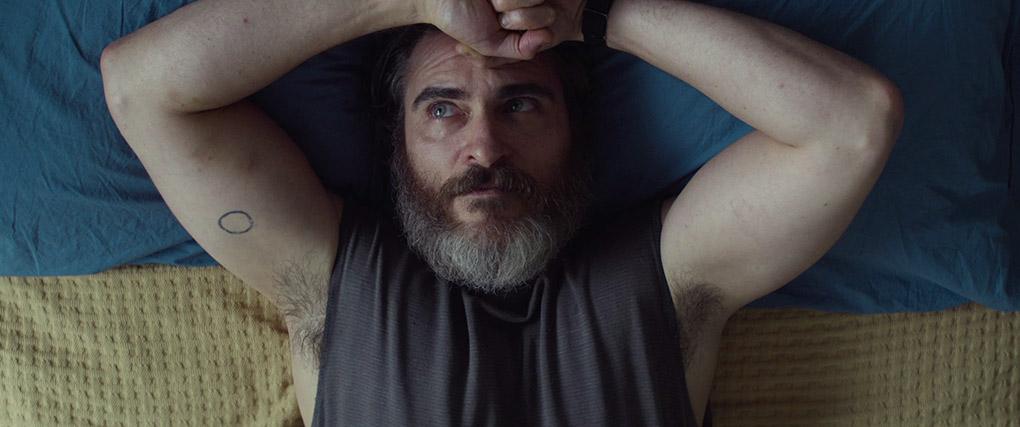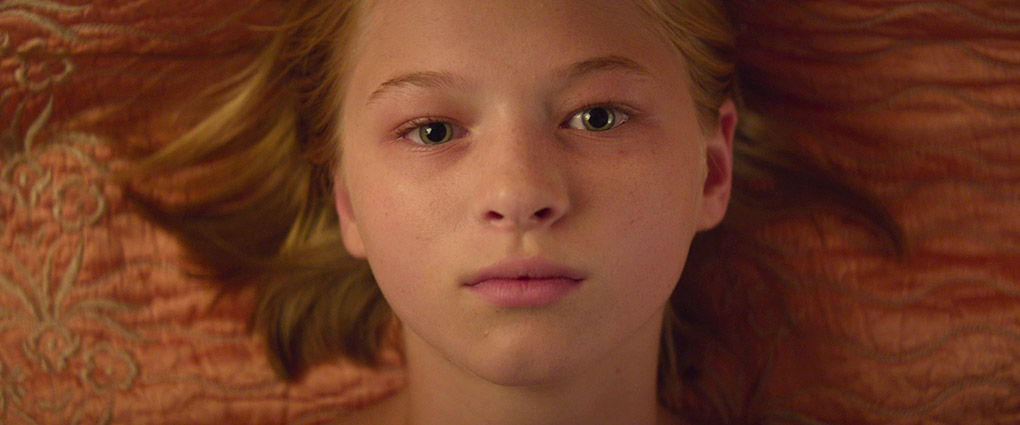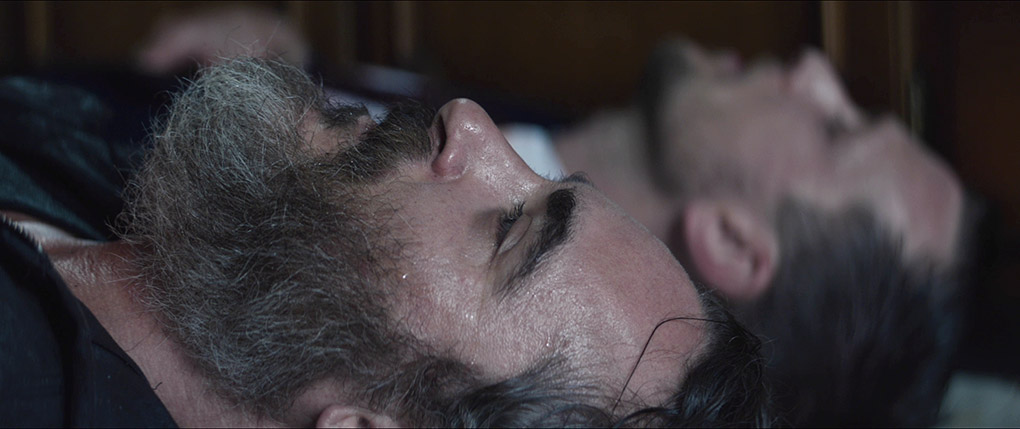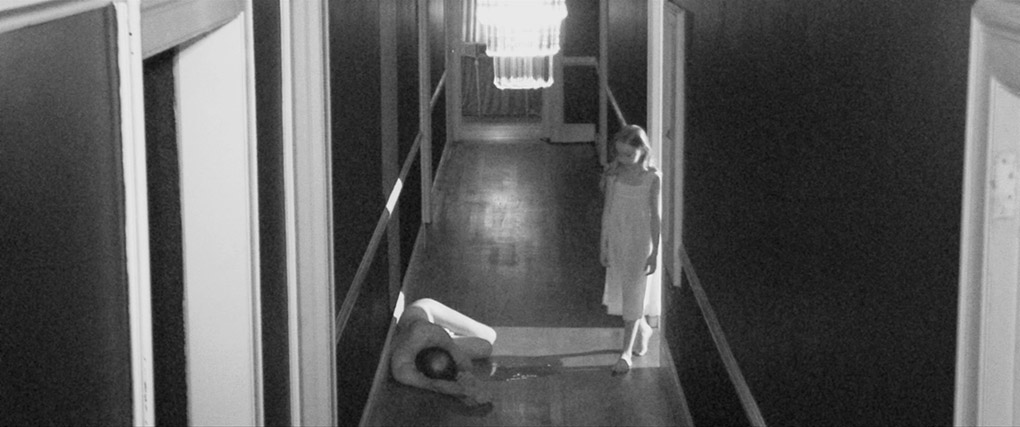Note: This review focuses primarily on the
differences and similarities between the book and the film, and includes discussion on scenes that will act as major spoilers for newcomers to either work, including the ending. Proceed with caution or read the book and see the film before doing so.
I want to start with a small, but relevant, criticism of film journalism. As someone who loves the fictional form in all its incarnations, I have the same appreciation (if not more in some ways) of the written method of storytelling as I do of the filmic one. I have studied both film and literature, and the thing that gets me is how often the link between the two is sidelined or overlooked completely. Today, a large percentage of feature films are created from literary source material and I feel it is important to at least acknowledge this. Unfortunately though, it isn't all that different from the way in which screenwriters can be overlooked or played down in terms of overall importance to a project – the storytellers get left behind. I know filmmaking is an audio-visual art form and there are many ingredients to making a movie, but when mainstream cinema is comprised of narrative-led films, we must take special note of where the roots of the storytelling come from. And when these roots are founded in the pages of a novel. it is important to explore the relationship between the source and the adaptation. Of course, sometimes the links are minimal to the point of film makers being influenced only by aspects of certain characters, themes or philosophies, and some of the greatest films have used the titles of literary works as jumping off points, with arguably little regard for much of what is contained within the original text. Blade Runner takes only the basic themes and characters from Philip K Dick's Do Androids Dream of Electric Sheep?, for example, and let's not get started on what Stephen King purists think of Kubrick's (and Diane Johnson's) take on The Shining!
Yet it can be extremely interesting when there is a closer connection between book and film – when the film is responding to the material in intelligent ways, and when the adaptation can give you more than the original piece of work. I find this a rarity, as the novel as a medium offers the capacity for meaning to be pretty densely packed. As we have seen with some film adaptations of epic novels, or series of novels, it can be impossible to cope with the scale of such things in a movie time-frame, with usually a sounder option being the TV serial adaption. But here, finally coming to the case in question, we have a film that is based on a book of less than one hundred pages. This is a shrewd move by You Were Never Really Here writer and director, Lynne Ramsay, who is no stranger to adapting novels for the big screen, as her two previous films were both originally written fiction. It’s shrewd because it is giving her a manageable task for any kind of faithful interpretation of the book. And it is, plot-wise, a fairly faithful interpretation of Jonathan Ames’ lean noir novella. The narrative through-line follows a very similar path. Although the ending of both pieces are very different (which I will come back to).

To enter the text of the film, our protagonist (Joe) is a disturbed ex-marine with PTSD who works for a private investigator and specialises in finding and returning missing children. He takes on a case where the client is a wealthy politician looking for his daughter who has been kidnapped and sold into the sex trafficking trade. In the gumshoe vernacular 'things go south' fast when the rescue is thwarted by what appear to be police. What follows has Joe following a personal path that sees his inner and outer worlds collapse.
This basic plot is true of both versions. Joe’s mental state deteriorates as the story progresses in both book and film, but there are some differences in Ames’ Joe and the one played by Joaquin Phoenix in Ramsay’s film. Let's begin with appearance. The Joe of the novel is a man of imposing stature, tall (over six foot) and broad. He has kept the army regulation haircut and close shave. Ramsey cast Joaquin Phoenix in the role, who firstly is approximately 5' 7", so substantially shorter than the original character, although Phoenix has an intimidating breadth about him. Also Ramsay has Joe wearing a full beard and long hair. These differing appearances go hand in hand with the methodology Joe uses in the work he performs. The most iconic motif of the hammer is present in both versions, but Joe is far more disciplined in Ames’ book, which goes hand-in-hand with his clean-cut appearance. He wants to be methodical and as clean in his planning and execution (sometimes quite literally) as possible. He uses latex gloves when 'in the field' and often carries a mobile phone signal jammer to prevent anyone in the vicinity calling for help, or any phone calls getting in the way of his operations. But as he is drawn further into the dark underbelly of the case he is working on, and as his mind becomes less clear, his methods become more sloppy. Phoenix's Joe has no gloves or jammer to aid him (apparently Phoenix's own idea to drop them), and his methods are more rough around the edges, like his appearance.
The idea of the character’s mental decline having already started before we are introduced to him is also conveyed through Joe’s unkempt look, an example of one of the applications of formic economy in using visual representation to connote state of mind used by Ramsay. One may think his physicality may be lessened by his slighter stature, but Ramsay shoots him in such a way that height isn't an issue and Phoenix's performance creates the cold and detached menace that Ames laid down in the book.

It is not unheard of for a film adaptation to eclipse the original material in terms of quality – the classic example being Spielberg's Jaws creating a classic piece of Hitchcockian suspense out of a throwaway pulp novel. It is still a rarity though, and I believe Ramsay's film has done so by choosing a workable foundation in the source material where she can build on Joe's characterisation as well as taking the basic private eye plot and the flashbacks hinted at in Ames’ story to fracture the narrative with abstract imagery. This changes the language of the story from basic linear chronological thriller to something more layered and complex. The motif of the kidnapped girl counting to herself as a coping mechanism to get through her ordeal mentioned once in the book becomes a recurring theme in the film, Ramsay chooses to open the film with this as part of the ghostly, whispering, hypnotic audio mix that sits disembodied over the darkness of an imageless screen. It is mingled with Joe's own whispering mutters, his own way to navigate the horrors of his existence. Urban rumbles sit next to wet stabbing sounds. So, before a single image appears on screen there is already an uneasy and mysterious story unfolding, a violent cityscape and internal anguish of the hunter and hunted all laid out in seconds of sound. And this is one of beauties of the shorthand of cinema – how many words did it take Jonathan Ames to conjure a semblance of what these few seconds told in sound?
A different example of sound being used to maximum effect comes during a sequence at the end of a scene that gives the protagonist and the tone of the film itself a strange gentleness which isn't really present in the book. After Joe has found and shot a pair of intruders in his house, one – shot in the stomach – is still alive and crawls to Joe's feet in the kitchen. After a brief interrogation, Joe lies down on the floor next to the bleeding-out assassin. There is a song playing on the radio in the background and as the dying man feverishly begins to murmur along to the lyrics, gradually Joe joins in and they both softly whisper the song. The man reaches for Joe's hand and Joe tentatively and gently holds it as they quietly sing. And then the man is dead. This is notable for its change of pace as well as highlighting Joe's softer side, which only otherwise surfaces in the company of his mother and the girl he rescues. There is also meaning within the song that Ramsay uses here – it is the 1982 version of I've Never Been To Me, whose title and theme reflects the films (and novel’s) sense of dysphoria and dislocation brought on by not only Joe's war time experiences, but the abuse he suffered as a child at the hands of his father, which is one of the flashback motifs that recur throughout the film.

So, sound is used to enhance the narrative and the spirit of the original by not only deft soundscaping, as in the film's opening, but also in the scene just detailed, using real-time interaction between characters and diegetic music (this is not the only time radio music is used). These are just two notable examples, but go to illustrate the depth and richness created in the film that serve the purpose of the movie, but which also builds on the source material. And, of course, it is not only Lynne Ramsay who is responsible for this; it is worth highlighting the exceptional work done by sound designer Paul Davies and composer Jonny Greenwood, often combining to extremely powerful effect throughout the film.
Greenwood has been on my radar since I was a teenager, as he is in the band Radiohead, who had a big influence on my musical tastes growing up in the 1990s. His various work on film soundtracks has been consistently impressive. Since There Will Be Blood in 2007, Greenwood has scored all of Paul Thomas Anderson's films. He also scored Lynne Ramsay's last film, We Need To Talk About Kevin (2011). In You Were Never Really Here he uses a variety of techniques and spans genres to create a soundtrack that reflects the protagonist's state of mind. There is throbbing synth electronica that puts one in mind of Kavinsky's 1980s inspired work for Nicolas Winding Refn in Drive, which also shares the kinetic pace spurred by the automotive navigation of urban landscapes (both films naturally signpost towards Scorsese's Taxi Driver). But perhaps more interesting is the melding of diegetic and non-diegetic sound and musical score – percussive industrial noises move from the world of the film into abstraction and integrate with pulsing string sections and bass accents in moments of tension. These rhythms foreshadow a climax where Joe must confront his fractured perception of reality, where sound bleeds into a slow-beaten, earthy, tin-tremble pulse accompanied by high string squeals and arrhythmic clatters that fade as we see an open and bloodied cut-throat razor atop a dining table, symbolising the young victim becoming the aggressor with a flash of this deadly blade.
Yet even though I have singled out the sonic aspect, Ramsay's narrative is not just aided by fantastic sound design. There are great central performances by Phoenix and Ekaterina Samsonov as the kidnapped Nina, who has her own journey in the film which has to be conveyed economically due to the short amount of screen time she is given. There is impressive cinematography from British-born Tom Townend, who has mainly worked on shorts and music videos with the occasional feature (most notably Joe Cornish's Attack The Block in 2011). Although knowing the singularity of Ramsay's vision, who can say how much of his own creativity went into the DoP work or if it was mostly a matter of following precise instruction? The same can be said for the Joe Bini’s editing, which tightly weaves the plot sparingly with the swift pace of a taut noir, with the odd oasis of atmospheric calm that never dispels the atmosphere of tension.

So, all the filmic ingredients distil into something I believe is more creative, thoughtful and fascinating than Ames’ novella (he has himself concurred with this in interviews). But before I end this article I wish to just cover the endings of both counterparts of You Were Never Really Here and pose a parting challenge.
Interestingly, the end where Nina becomes the one in control and her role is reversed with Joe's as protector (as well as his last suicidal daydream) is not featured in the book at all. Ames’ story finishes at a point where Joe has information about the kidnapped girl's location (Lisa in the book) and is just about to set out in search of her once more. It is unusual in how it cuts the story off almost at the point of it getting interesting. He ends it as though it is a kind of 'end of part one', reading as though the story will continue. Actually, Ames subverts the expectation of narrative in a way done by some short films by showing only a part of a larger story, so there is a rather satisfying parity in Ames' original work connoting a film influence and in turn Ramsay's film work reflects the essence of Ames' prose.
At the end of the day, it is up to the individual who has experienced both to decide which ending is better and which version is better, if either. I do urge you though to pick up the book of a film you want to see and give it a read before entering into the cinema or flashing it up on your TV at home – see how your own imagination interprets it, how it speaks to you, before seeing what the filmmakers have done with it. No doubt you will be one of those 'the book is better' people, but occasionally it's quite rewarding to be a 'actually the film is better' person! Whatever you do though, don't let the storyteller get left behind.
Shot digitally on the ever-popular Arri Alexa, You Were Never Really Here has been transferred in its original aspect ratio of 2.35:1 and is as pristine as you'd expect from a modern Blu-ray transfer from a digital master. The detail is crisp, the colour naturalistic on daytime exteriors and appropriately warm inside at night, and the contrast attractively balanced, delivery solid black levels with swallowing shadow detail except when lit to do so.

Youy can choose between Linear PCM 2.0 stereo and DTS-HD Master Audio 5.1 surround, and while the stereo track is fine, it's blown out of the water by the DTS-HD track, which makes the most of the film's extraordinary sound mix. When Joe is out in traffic, we're out there with him, surrounded on all sides by the layered roar of traffic, and the sense that we're inside his head at times is vividly captured. As expected, the clarity and dynamic range are both top-notch, and Jonny Greenwood's sounds terrific throughout.
Optional English subtitles for the deaf and hearing impaired are included.
You Were Never Really Here: From Book To Film (1:02)
This title excited me when I got the disc, knowing it would be the main thrust of my article. Alas, as the pitifully brief running time might indicate, it was a great disappointment. Basically Ramsay says she liked the book and wanted to do it her own way and Ames said he really liked the film. That's about it. The lack of special features on most mainstream new releases continues to enrage me, and in a time when films can be downloaded it is not outlandish to think extras on a physical product could be a selling point...? Well, it served to fuel the introductory sentiment of this article, so we can find solace in symmetry at least.
Another superb work from the singular talents of Lynne Ramsay gets a first-class transfer with a terrific DTS-HD surround soundtrack, but the almost comoplete lack of extra features really lets the disc down, and having a separate Extra Features menu (note the plural) that contains only a single extra that rauns for juist one minute is taking the mickey. We can only hope that Criterion get the rights to the film at a later date and deliver the Blu-ray that the film deserves.
|